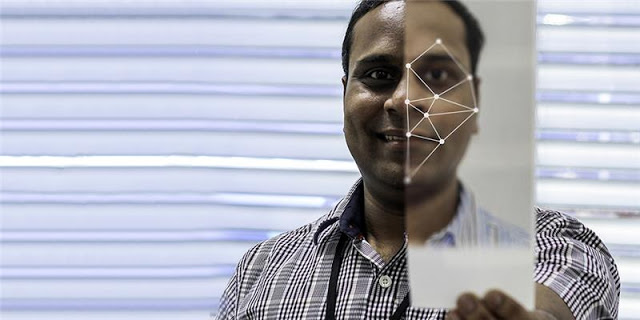

| Online: | |
| Visits: | |
| Stories: |

| Story Views | |
| Now: | |
| Last Hour: | |
| Last 24 Hours: | |
| Total: | |
Facial Recognition To Be Tested at Airports
More and more people are travelling by plane, so automating airport security checks makes sense. The use of biometric features is a way to identify people at airports. Biometrics measures biological patterns — such as fingerprints, iris patterns, head shape or gait.
Postdoctoral fellow Raghavendra Ramachandra and his colleagues at NTNU in Gjøvik have developed algorithms to identify faces.
This technology allows recognized and identified individuals to be let through automatically. Facial recognition software is already fully developed, and soon the technology company Safran Morpho will test it at several airports worldwide.
Privacy is paramount
“Privacy is our top priority. The information on individuals’ movements is not stored in the databases. If someone were to hack the databases, they wouldn’t be able to reconstruct the data, “ says Ramachandra.
Photo: Thinkstock
Face recognition is the preferred method to identify people at airports, because it is easy for users. It is a means of authentication that does not require contact, and it is not distracting to the user. In actuality, people being identified will not notice anything. One goal of the project is to increase border control security.
Different practices on different continents
He says that centralized data storage is not possible in Europe due to the stringent security regulations regarding the storage of personal data.
“As researchers, we try to minimize the risk of personal information going astray. There’s always the possibility of being hacked when you save information digitally, but in using biometrics we try to mitigate this risk by avoiding centralized storage,” he says.
EU project
The EU FIDELITY project ended in January 2016. Over the last four years, the project developed solutions and new proposals for fast, secure and efficient real-time authentication of individuals at border crossings.
NTNU researchers in Gjøvik have been involved in developing solutions for facial recognition, iris recognition, large-scale fingerprint indexing, privacy and biometric finger vein recognition.
An overview of the research papers that have been published for the project can be seen here.
Contacts and sources:
By Maria Lillemoen
Source: http://www.ineffableisland.com/2016/02/facial-recognition-to-be-tested-at.html




